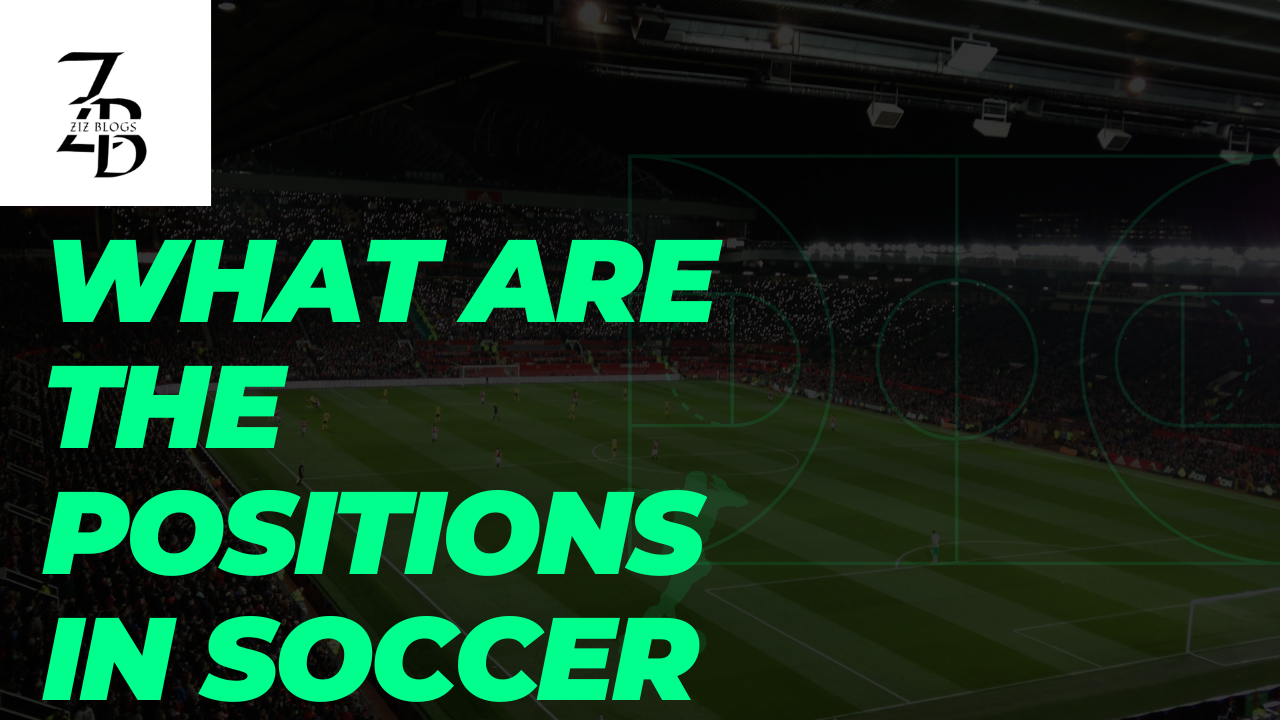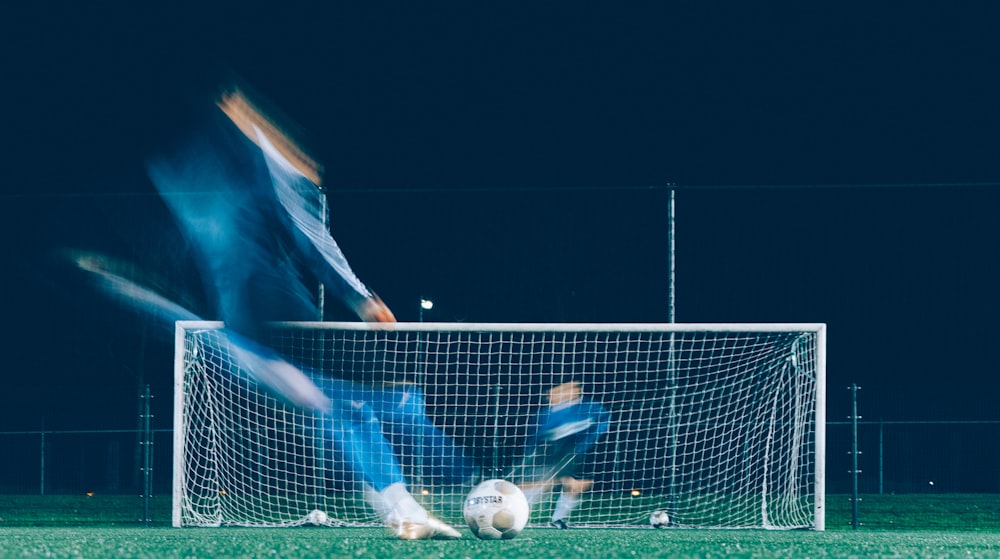Positions in Soccer
Soccer, also known as football in many parts of the world, is a globally beloved sport characterized by its simplicity yet intricacy. Understanding the positions within soccer is crucial for players, coaches, and fans alike to appreciate the nuances of the game and its tactical elements. Each position has its unique role, responsibilities, and skill sets, contributing to the team’s overall strategy and performance.
Goalkeeper
Role and Responsibilities
The goalkeeper serves as the last line of defense for the team, tasked with preventing the opposing team from scoring goals. Their primary responsibility is to stop shots on goal using various techniques such as diving, blocking, and catching. Additionally, goalkeepers are responsible for organizing the defense, communicating with teammates, and initiating offensive plays through accurate distribution of the ball.
Key Skills
Successful goalkeeping requires a combination of physical and mental attributes. Goalkeepers need excellent reflexes to react quickly to shots, agility to cover the goal area effectively, and strength to command their penalty area during set-pieces. Moreover, strong communication skills, leadership qualities, and composure under pressure are essential for a goalkeeper to excel in their role.
Positioning and Techniques
Proper positioning is paramount for goalkeepers to anticipate and react to shots effectively. They must constantly assess the game situation, adjust their positioning accordingly, and make split-second decisions to narrow the angle and minimize the opponent’s scoring opportunities. Additionally, mastering various techniques such as diving, blocking, punching, and distributing the ball accurately with throws or kicks is crucial for a goalkeeper’s success.
Defenders
Center-backs
Role and Responsibilities
Center-backs, also known as central defenders, form the backbone of the defensive line, providing stability and organization to the team’s defense. Their primary role is to thwart opposing attacks, intercept passes, and neutralize the opposing team’s strikers. Center-backs are responsible for marking opposing players, winning aerial duels, and initiating build-up play from the back.
Attributes and Skills
Center-backs require a combination of physical and technical attributes to excel in their position. They need strength to outmuscle opposing forwards, aerial prowess to win headers, and anticipation to intercept passes. Additionally, strong tackling ability, positional awareness, and the ability to read the game are essential traits for center-backs to effectively nullify the opponent’s attacks.
Full-backs

Role and Responsibilities
Full-backs operate on the flanks of the defensive line, providing defensive cover and support in attack. Their primary role is to mark opposing wingers, prevent crosses into the penalty area, and provide overlapping runs to support the midfielders and forwards. Full-backs play a vital role in both defensive solidity and offensive creativity.
Attributes and Skills
Successful full-backs possess a unique blend of defensive and attacking attributes. They need speed and stamina to cover large areas of the pitch, as well as agility to track the movements of opposing wingers. Moreover, good crossing ability, dribbling skills, and the capability to contribute to the team’s attacking phase make full-backs indispensable assets in modern soccer tactics.
Midfielders

Defensive Midfielders
Role and Responsibilities
Defensive midfielders, often referred to as holding midfielders or “number 6s,” play a crucial role in shielding the defense and breaking up opposition attacks. Their primary responsibility is to win possession, intercept passes, and disrupt the opponent’s midfield play. Defensive midfielders act as a defensive anchor, providing cover for the backline and initiating counter-attacks.
Attributes and Skills
To excel as a defensive midfielder, players need exceptional tackling ability, anticipation, and positioning. They must possess a strong sense of awareness to read the game and anticipate the movements of opposing players. Additionally, good passing range, composure on the ball, and the ability to distribute play efficiently are essential traits for defensive midfielders to dictate the tempo of the game.
Central Midfielders
Role and Responsibilities
Central midfielders, also known as box-to-box midfielders or “number 8s,” are versatile players who contribute to both defensive and offensive phases of play. Their role involves controlling the midfield, dictating play, and transitioning between defense and attack seamlessly. Central midfielders act as the engine room of the team, linking defense with attack and providing support to teammates in all areas of the pitch.
Attributes and Skills
Successful central midfielders possess a wide range of attributes, including stamina, vision, passing accuracy, and tactical intelligence. They must be able to cover large distances during the game, support the defense when under pressure, and create scoring opportunities for the forwards. Moreover, strong dribbling ability, creativity, and the capacity to maintain possession under pressure are crucial for central midfielders to influence the game positively.
Attacking Midfielders
Role and Responsibilities
Attacking midfielders, often referred to as “number 10s” or playmakers, are tasked with unlocking opposition defenses and creating goal-scoring opportunities for their teammates. Their primary role is to link midfield with attack, provide creative spark, and deliver decisive passes in the final third of the pitch. Attacking midfielders act as the creative hub of the team, orchestrating attacks and exploiting gaps in the opponent’s defense.
Attributes and Skills
To excel as an attacking midfielder, players need exceptional vision, creativity, and ball control. They must possess the ability to read the game, find space in crowded areas, and deliver precise through balls or crosses to their teammates. Moreover, good shooting technique, dribbling skills, and the capacity to score goals themselves make attacking midfielders invaluable assets in unlocking stubborn defenses and turning games in their team’s favor.
Forwards
Strikers
Role and Responsibilities
Strikers, also known as forwards or “number 9s,” are primarily responsible for scoring goals and leading the team’s attacking line. Their role involves finding space in the opposition’s defense, making intelligent runs, and converting goal-scoring opportunities into goals. Strikers are the focal point of the team’s attacking play, often relying on their instincts and finishing ability to make a decisive impact on the game.
Attributes and Skills
Successful strikers possess a combination of speed, strength, and technical proficiency in front of goal. They must be adept at finishing with both feet and their head, as well as possessing the ability to hold up play and bring teammates into the game. Moreover, sharp awareness of positioning, anticipation of defensive movements, and composure under pressure are essential traits for strikers to consistently find the back of the net.
Wingers
Role and Responsibilities
Wingers, also known as wide forwards or “number 7s” and “number 11s,” operate on the flanks of the attacking line, providing width and penetration in the final third of the pitch. Their primary role is to take on opposing defenders, deliver crosses into the penalty area, and create goal-scoring opportunities for their teammates. Wingers are often characterized by their pace, dribbling ability, and flair on the ball.
Attributes and Skills
Successful wingers possess explosive speed, quick acceleration, and exceptional dribbling skills to beat opposing defenders in one-on-one situations. They must be capable of delivering accurate crosses and cutbacks into the box, as well as possessing the vision to pick out teammates in goal-scoring positions. Moreover, adaptability to play on either flank, defensive work rate, and the ability to track back and support the defense make wingers indispensable assets in modern soccer tactics.
Utility Players
Versatility in Positions
Utility players are highly versatile individuals who can operate effectively in multiple positions across the pitch. Their flexibility allows coaches to adapt to various tactical situations, cover for injured or suspended players, and maintain squad depth throughout the season. Utility players bring adaptability, reliability, and tactical intelligence to the team, often serving as invaluable assets in both defensive and attacking roles.
Importance in Team Dynamics
Utility players play a crucial role in maintaining team balance and cohesion, as they can seamlessly slot into different positions without disrupting the team’s structure. Their ability to fulfill various roles and responsibilities enhances squad rotation, provides tactical flexibility, and mitigates the impact of injuries or suspensions on the team’s performance. Moreover, utility players exemplify the importance of teamwork, selflessness, and commitment to the collective success of the team.
Tactics and Formations
Impact on Player Positions
Tactics and formations play a significant role in determining the positions and roles of players on the field. Different tactical systems require players to adopt specific positions and fulfill distinct responsibilities based on the coach’s strategic objectives and the team’s strengths and weaknesses. Understanding the tactical nuances of different formations is essential for players to adapt their playing style and contribute effectively to the team’s success.
Common Formations and Their Position Requirements

Various formations are employed in soccer, each with its unique configuration of players and positional requirements. Common formations include the 4-4-2, 4-3-3, 3-5-2, and 4-2-3-1, among others, each with its advantages and limitations. These formations dictate the positioning and roles of players on the field, shaping the team’s defensive and offensive strategies. Analyzing the positional requirements of different formations enables coaches to optimize player placement, balance defensive solidity with attacking prowess, and exploit the opponent’s weaknesses effectively.
Conclusion
Soccer positions encompass a diverse range of roles, responsibilities, and skill sets, each contributing to the team’s overall performance and success. From the goalkeeper guarding the goalposts to the forwards leading the attacking line, every position plays a crucial role in shaping the outcome of the game. Understanding the intricacies of each position, as well as the tactical considerations that influence player deployment, is essential for players, coaches, and fans to appreciate the beautiful game of soccer fully. By recognizing the importance of teamwork, adaptability, and strategic thinking, individuals can unlock the true potential of their team and strive for greatness on the soccer pitch.




